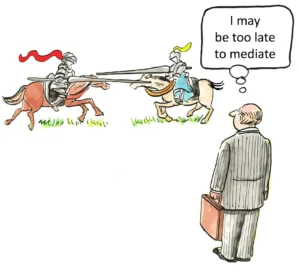The Evolution of Due Process from Magna Carta to Modern America
The remarkable journey of due process from its medieval origins to its central place in American constitutional jurisprudence represents one of the most significant developments in the history of liberty. This evolution traces a path from the fields of Runnymede, where English barons forced King John to acknowledge limits on royal power, to the chambers of the United States Supreme Court, where justices continue to define the contours of constitutional protections against government overreach. Understanding the evolution of due process from Magna Carta to modern America requires examining not merely legal doctrines but the underlying principles of limited government that have shaped Western legal traditions for over eight centuries.
The concept of due process embodies the fundamental notion that government power cannot be exercised arbitrarily against individuals. Rather, it must conform to established legal principles and procedures that protect basic rights. This idea, revolutionary when first articulated in Magna Carta’s famous Chapter 39, has become so embedded in American legal consciousness that it now forms the bedrock of our constitutional order. Yet the journey from “law of the land” to modern due process jurisprudence was neither straightforward nor inevitable.
The story of due process illustrates the remarkable continuity of certain legal principles across centuries and continents. While the specific applications and interpretations have evolved dramatically, the core idea—that government must act according to law rather than arbitrary will—has persisted. This continuity reflects not merely legal tradition but a deeper understanding about the proper relationship between government and the governed in a society that values individual liberty.
The Magna Carta: Foundation of Due Process
The Magna Carta, sealed by King John in 1215, emerged not as a democratic manifesto but as a peace treaty between an unpopular monarch and rebellious barons. Yet within this document, particularly in Chapter 39, lay the seeds of what would eventually grow into modern due process protections. The critical language promised that “no free man shall be seized or imprisoned, or stripped of his rights or possessions, or outlawed or exiled, or deprived of his standing in any way, nor will we proceed with force against him, or send others to do so, except by the lawful judgment of his equals or by the law of the land.”
This provision, though initially intended to protect the aristocracy rather than common people, established the revolutionary principle that even the king was subject to the law. The phrase “law of the land” (per legem terrae) would later evolve into “due process of law,” but the essential concept remained the same: government actions depriving individuals of life, liberty, or property must conform to established legal procedures and principles. This represented a significant departure from the prevailing view that the monarch’s will was effectively law.
The Magna Carta’s significance lies not in its immediate practical effects, which were limited, but in its articulation of principles that would be invoked repeatedly in subsequent centuries. King John repudiated the charter within weeks, and many of its provisions were later modified or abandoned. Yet the idea that government power should be constrained by law rather than exercised arbitrarily took root in English legal thought. As noted in the Library of Congress exhibition on Magna Carta, it was “widely held to be the people’s reassertion of rights against an oppressive ruler,” a characterization that would prove particularly appealing to American colonists chafing under British rule.
From England to America: Colonial Adoption of Due Process Principles
The principles embodied in Magna Carta traveled to America with the English colonists, who viewed themselves as entitled to all the “rights of Englishmen.” Colonial charters frequently incorporated protections derived from Magna Carta, including early versions of due process guarantees. The Mayflower Compact of 1620, while not directly invoking Magna Carta, established a system of self-government based on majority rule—reflecting the growing expectation that government should operate according to established procedures rather than arbitrary decisions.
Colonial legal codes increasingly incorporated procedural protections against arbitrary government action. The Massachusetts Body of Liberties, adopted in 1641, included provisions clearly influenced by Magna Carta’s Chapter 39, guaranteeing that no person would be deprived of life, liberty, or property “without due process of law.” Similar protections appeared in other colonial legal codes, including the New York Charter of Liberties and Privileges of 1683 and the Pennsylvania Charter of Privileges of 1701.
These colonial adaptations of due process principles reflected both continuity with English legal traditions and evolution to meet the needs of developing American societies. While maintaining the core concept that government must act according to established law, colonial legal systems often expanded protections beyond what was available in England. This expansion reflected both practical necessities in colonies with limited formal legal institutions and the growing American emphasis on individual rights against government power.
The Constitution and Bill of Rights: Formalizing Due Process
When the Framers gathered in Philadelphia in 1787 to draft a new constitution, they brought with them a deep commitment to the principles of limited government embodied in Magna Carta. The original Constitution included several provisions reflecting due process concerns, including prohibitions on bills of attainder and ex post facto laws, as well as the guarantee of habeas corpus. However, it notably lacked an explicit due process clause or comprehensive bill of rights.
This omission became a major point of contention during the ratification debates. Anti-Federalists argued that without explicit protections for individual rights, the new federal government might become as tyrannical as the British monarchy. Federalists initially countered that such protections were unnecessary given the limited powers granted to the federal government, and potentially dangerous if they implied that any rights not specifically enumerated were unprotected.
James Madison, though initially skeptical about the need for a bill of rights, ultimately became its champion in the First Congress. As one commenter in the search results explains, Madison initially believed that due process and other rights were “natural rights” that existed independently of government recognition. He worried that listing certain rights might imply that unlisted rights did not exist. Despite these concerns, Madison recognized the political necessity of addressing Anti-Federalist objections and drafted what would become the Bill of Rights.
The Fifth Amendment, ratified in 1791, explicitly incorporated due process protections against federal action: “No person shall be… deprived of life, liberty, or property, without due process of law.” This language, drawn from centuries of English legal tradition tracing back to Magna Carta, formalized the principle that government actions affecting fundamental individual interests must conform to established legal procedures and principles.
Procedural Due Process: The Traditional Understanding
For much of American history, due process was understood primarily in procedural terms—focusing on the fairness of the procedures used when government deprives someone of life, liberty, or property. This conception, most closely tied to Magna Carta’s original meaning, emphasized notice, opportunity to be heard, and judgment according to established legal principles rather than arbitrary will.
Procedural due process requirements vary depending on the context and the importance of the interests at stake. In criminal proceedings, where liberty and potentially life are at risk, due process demands robust protections: notice of charges, right to counsel, confrontation of witnesses, trial by jury, and proof beyond reasonable doubt. In civil contexts involving property interests, the requirements may be less stringent but still include basic elements of fairness: notice, opportunity to present evidence and arguments, and an impartial decision-maker.
The Supreme Court’s approach to procedural due process has evolved over time, becoming increasingly sophisticated in balancing individual rights against government interests. In Mathews v. Eldridge, the Court established a three-part test for determining what process is due in particular contexts: (1) the private interest affected; (2) the risk of erroneous deprivation through current procedures and the value of additional safeguards; and (3) the government’s interest, including administrative burdens. This balancing approach recognizes that due process is not a fixed concept but must be adapted to different contexts while maintaining its core commitment to fairness.
The Fourteenth Amendment: Extending Due Process to the States
The Fifth Amendment’s due process clause originally applied only to the federal government, leaving state actions unconstrained by federal constitutional protections. This limitation became increasingly problematic as state governments grew more active in regulating economic and social life, sometimes in ways that threatened individual rights. The Civil War and Reconstruction fundamentally altered this constitutional landscape.
The Fourteenth Amendment, ratified in 1868, extended due process protections against state action: “No State shall… deprive any person of life, liberty, or property, without due process of law.” This provision, along with the amendment’s other protections, represented a significant expansion of federal constitutional constraints on state power. As the search results note, the Fourteenth Amendment was particularly concerned with protecting the rights of newly freed slaves against discriminatory state laws and practices.
Initially, the Supreme Court interpreted the Fourteenth Amendment’s due process clause narrowly. In the Slaughter-House Cases, the Court rejected arguments that the amendment protected a broad range of economic liberties against state regulation. However, Justice Stephen Field’s dissent in that case laid the groundwork for a more expansive interpretation, arguing that the amendment protected individuals from state legislation infringing upon their “privileges and immunities” under the federal Constitution.
Over time, the Court gradually expanded its interpretation of the Fourteenth Amendment’s due process clause, using it to apply various protections from the Bill of Rights against state action—a process known as “incorporation.” This process began with Chicago, Burlington & Quincy Railroad v. City of Chicago in 1897, which incorporated the Fifth Amendment’s takings clause, and accelerated in the mid-20th century. Today, almost all of the protections in the Bill of Rights have been incorporated against the states through the due process clause.
Substantive Due Process: The Controversial Extension
While procedural due process focuses on the fairness of procedures, substantive due process addresses the content of laws themselves—asking whether certain government actions are so fundamentally unfair or arbitrary that no amount of procedural fairness can justify them. This doctrine, which has no explicit textual basis in the Constitution, has been one of the most controversial aspects of due process jurisprudence.
The origins of substantive due process are contested. Some scholars trace it to antebellum state court decisions striking down legislation as unreasonable or exceeding legitimate police powers. Others point to post-Civil War developments, particularly Thomas Cooley’s influential 1868 treatise on constitutional limitations, which summarized earlier state court decisions limiting legislative power. Still others see it as a later innovation, developed primarily by the Supreme Court in the late 19th and early 20th centuries.
The doctrine reached its first peak during the “Lochner era” (roughly 1897-1937), when the Supreme Court frequently struck down economic regulations as violations of “liberty of contract” protected by the due process clause. In Lochner v. New York, the Court invalidated a state law limiting bakery employees to 60 hours of work per week, finding it an unconstitutional interference with freedom of contract. This approach, which effectively constitutionalized laissez-faire economic theory, has been widely criticized as judicial overreach.
The Court eventually abandoned Lochner’s approach to economic regulation in West Coast Hotel v. Parrish, upholding a state minimum wage law and recognizing broader legislative authority to regulate economic matters. However, substantive due process did not disappear; it shifted focus from economic liberties to personal rights, particularly those related to privacy, autonomy, and intimate relationships.
In Griswold v. Connecticut, the Court struck down a state law prohibiting the use of contraceptives, finding a constitutional right to privacy in the “penumbras” and “emanations” of various constitutional provisions, including the due process clause. This decision laid the groundwork for later cases expanding substantive due process protection for personal autonomy, including Roe v. Wade (abortion), Lawrence v. Texas (intimate sexual conduct), and Obergefell v. Hodges (same-sex marriage).
The Conservative Critique and Originalist Response
The doctrine of substantive due process has faced persistent criticism, particularly from conservative and originalist jurists who argue that it lacks textual foundation and enables judges to impose their policy preferences under the guise of constitutional interpretation. Justice Clarence Thomas has been among the most vocal critics, arguing that the Court should reconsider all of its substantive due process precedents.
The originalist critique of substantive due process emphasizes that the phrase “due process of law” historically referred to procedural protections, not substantive limitations on legislative power. From this perspective, using the due process clause to invalidate democratically enacted laws based on their content rather than the procedures used to enact or enforce them stretches the constitutional text beyond recognition and usurps the proper role of the legislative branch.
Critics also point to the indeterminacy of substantive due process analysis, which often relies on concepts like “ordered liberty” or “deeply rooted traditions” that provide limited concrete guidance to courts. This indeterminacy, they argue, inevitably leads judges to substitute their own moral or political judgments for those of elected representatives, undermining democratic governance and the rule of law.
Some conservative critics suggest that the proper approach to protecting unenumerated rights is through the Ninth Amendment (“The enumeration in the Constitution, of certain rights, shall not be construed to deny or disparage others retained by the people”) or the Privileges or Immunities Clause of the Fourteenth Amendment, rather than through substantive due process. These provisions, they argue, provide more plausible textual bases for protecting rights not specifically mentioned in the Constitution.
Modern Due Process Jurisprudence: Balancing Tradition and Evolution
Contemporary due process jurisprudence reflects ongoing tensions between competing visions of the doctrine’s proper scope and application. The Supreme Court has generally maintained a distinction between economic regulations, which receive deferential review, and laws affecting fundamental rights or liberty interests, which face more exacting scrutiny.
In the realm of procedural due process, the Court has continued to refine its approach to determining what procedures are required in different contexts. The Mathews balancing test remains the primary framework, with courts weighing the private interest affected, the risk of erroneous deprivation, and the government’s interest in maintaining current procedures. This flexible approach allows adaptation to new contexts while maintaining the core commitment to fair procedures.
Substantive due process jurisprudence has seen more dramatic shifts, reflecting changing Court composition and ongoing debates about the doctrine’s legitimacy. In Washington v. Glucksberg, the Court declined to recognize a right to physician-assisted suicide, emphasizing that substantive due process protects only those rights “deeply rooted in this Nation’s history and tradition” and “implicit in the concept of ordered liberty.” This more restrained approach aimed to provide greater discipline and objectivity in identifying protected rights.
However, in later cases like Lawrence v. Texas and Obergefell v. Hodges, the Court adopted a more expansive approach, protecting rights to intimate personal choices and same-sex marriage despite their relatively recent recognition in American law. These decisions emphasized evolving understandings of liberty and dignity rather than strict historical practice. Most recently, in Dobbs v. Jackson Women’s Health Organization, the Court overruled Roe v. Wade, returning to a more historical approach to identifying rights protected by substantive due process.
Due Process in the Digital Age: New Challenges and Adaptations
As technology transforms society, due process principles face new challenges and applications. Digital evidence collection, algorithmic decision-making, and remote proceedings raise novel questions about what procedures are necessary to ensure fairness in contemporary contexts.
Government surveillance programs, data collection practices, and the use of artificial intelligence in law enforcement raise significant due process concerns. Ensuring that these practices comply with constitutional protections and provide adequate safeguards for individual rights is essential in maintaining the balance between security and liberty. The Supreme Court has begun to address these issues in cases like Carpenter v. United States, which held that the government generally needs a warrant to access cell phone location data.
Similarly, the use of algorithmic decision-making in areas like criminal sentencing, bail determinations, and public benefits administration raises important questions about transparency, accuracy, and fairness. Due process traditionally requires that individuals understand the basis for decisions affecting their rights and have an opportunity to challenge those decisions—requirements that may be difficult to satisfy when complex algorithms make or influence important determinations.
The COVID-19 pandemic accelerated the adoption of remote proceedings in courts nationwide, raising new due process questions about virtual hearings. While remote technologies offer potential benefits for access to justice, they also present challenges for ensuring meaningful participation, effective representation, and accurate credibility assessments. Courts continue to grapple with balancing technological innovation against traditional due process values in this evolving landscape.
The Enduring Legacy of Magna Carta in American Due Process
Despite the vast changes in society and law since 1215, Magna Carta’s influence on American due process jurisprudence remains profound. The fundamental principle that government must act according to law rather than arbitrary will continues to animate constitutional protections against government overreach. As the Library of Congress exhibition notes, Magna Carta’s legacy “captured American distrust of concentrated political power” and helped shape both the federal Constitution and state constitutions.
The Supreme Court continues to invoke Magna Carta when interpreting due process requirements. In Hamdi v. Rumsfeld, Justice O’Connor cited Magna Carta in holding that due process requires that citizens designated as enemy combatants receive notice and an opportunity to contest their status before a neutral decision-maker. Similarly, in Boumediene v. Bush, the Court referenced Magna Carta’s habeas corpus protections when striking down limitations on detainees’ access to federal courts.
This continued reference to an 800-year-old document reflects not mere historical curiosity but recognition of the enduring principles it represents. The idea that government power must be exercised according to law, with procedural protections for individual rights, remains as vital today as when the barons confronted King John at Runnymede. While the specific applications have evolved dramatically, the core commitment to limiting arbitrary government action continues to define American constitutionalism.
Conclusion: The Continuing Evolution of Due Process
The evolution of due process from Magna Carta to modern America illustrates both remarkable continuity and significant change. The basic principle that government must act according to law rather than arbitrary will has persisted for over eight centuries, even as its specific applications have transformed to address new contexts and challenges. This evolution reflects the enduring tension between government power and individual liberty that defines constitutional democracy.
Due process remains a work in progress, with courts continuing to refine its requirements in response to changing social conditions and technologies. The debates over its proper scope and application—particularly regarding substantive due process—reflect deeper disagreements about the role of courts in a democratic society and the proper interpretation of constitutional text. These debates are unlikely to be resolved definitively, as they touch on fundamental questions about the nature of constitutional government.
What remains constant is the recognition that due process, in both its procedural and substantive dimensions, serves as an essential bulwark against arbitrary government action. From Magna Carta’s “law of the land” to the modern constitutional guarantee, due process embodies the fundamental principle that government power must be exercised with fairness, reason, and respect for individual rights. This principle, revolutionary when first articulated in 1215, continues to define the relationship between government and the governed in American constitutional democracy.
Citations:
- Research on Due Process Historical Development
- Historical Discussion on Due Process as Constitutional Requirement
- Magna Carta’s Influence on the US Constitution
- Due Process Clause Constitutional Explanation
- Explaining the Magna Carta and Its Historical Significance
- University of Chicago Law Review on Due Process
- Lawyer Discussion on Ancient Roots of Due Process
- Why Americans Champion Magna Carta as Freedom Symbol
- Did Continental Congress Invent Constitutional Rights Concept?
- Due Process of Law: Magna Carta’s Legacy
- Cornell Law School’s Due Process Definition
- Comparing Magna Carta and the Bill of Rights
- Strengths and Weaknesses of Due Process Concept
- Should Due Process Apply in Immigration Proceedings?
- How History and Tradition Shape Supreme Court Rulings
- Discussion on Erosion of Due Process Rights
- Pope Innocent III’s Annulment of Magna Carta
- Preferred Constitutional Interpretation Methods Discussion
- Public Misunderstanding of Due Process Rights
- Origins of Modern Legal Systems Discussion
- Most Significant Supreme Court Due Process Decision
- European Perspectives on Magna Carta’s Significance
- Should Migrants Receive Due Process Rights?
- Professor Nicholas Vincent AMA on Magna Carta
- Is Substantive Due Process a Valid Legal Concept?
- International Law Journal on Due Process Rights
- Wikipedia’s Comprehensive Due Process Article
- Florida Bar Journal on Magna Carta’s Due Process Legacy
- Congressional Analysis of Fifth Amendment Due Process
- Cornell Law School’s Magna Carta Definition
- Supreme Court Cases on Due Process
- UVA Law on Magna Carta’s 800-Year Legacy
- Britannica’s Due Process Explanation
- National Archives Magna Carta Exhibition
- Congressional Essay on Fifth Amendment Due Process
- Historical Background of Due Process Rights
- Magna Carta, Rule of Law, and US Constitution
- Magna Carta and Fundamental Right to Due Process
- Origins of Substantive Due Process
- Research on Due Process Constitutional Development
- Explain Like I’m Five: What is the Magna Carta?
- Video Explanation of Magna Carta’s Historical Importance


















